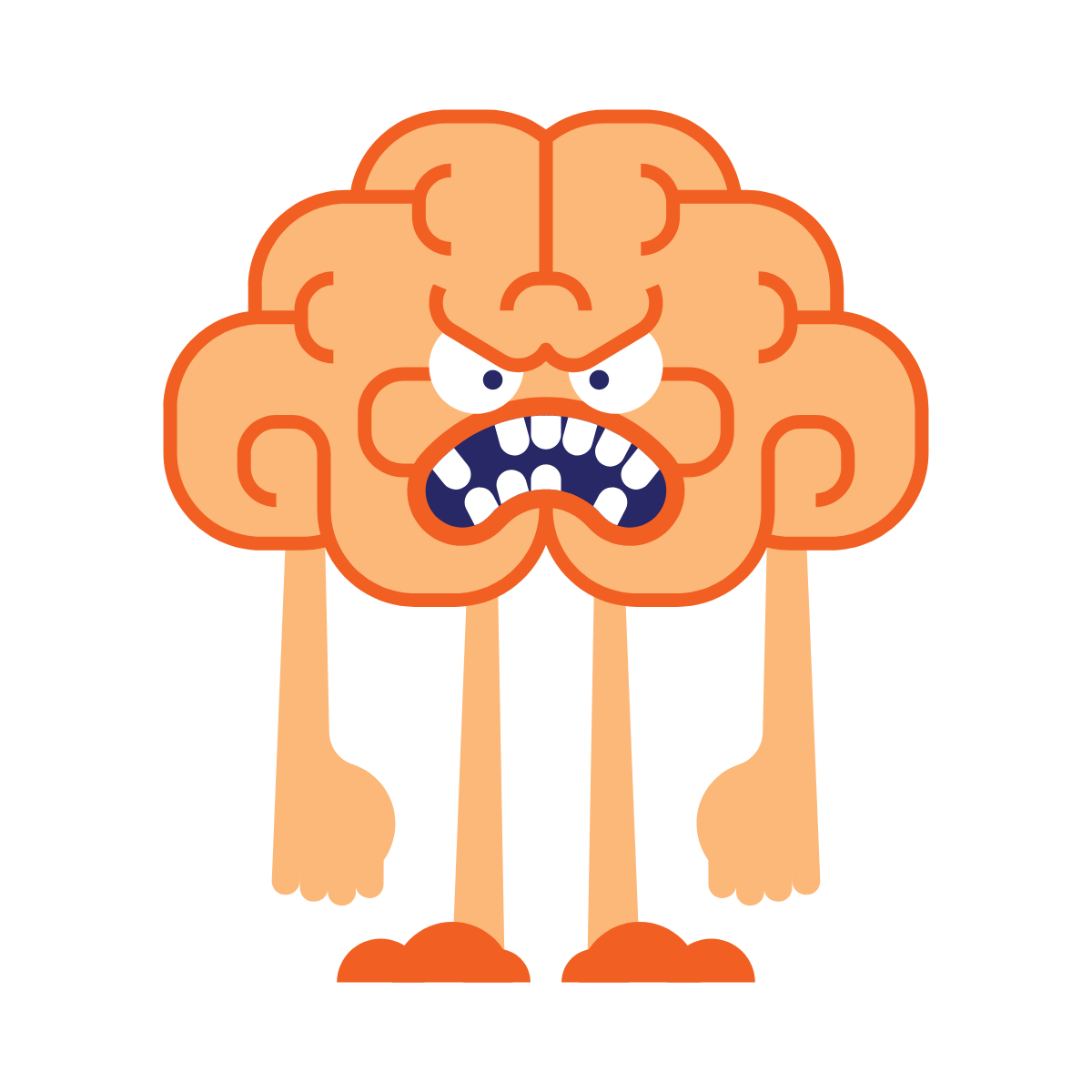3 Steps to Help You Move Forward When You're Stuck
Life can sometimes resemble quicksand. One moment, you’re strolling down a path full of sunshine, brimming with energy and surrounded by vibrancy. The next, you find yourself sinking into a murky, suffocating muck, confused about how you ended up there or how to escape. The more you struggle, the deeper you sink, as if the muck is draining away your vitality, your spark, and every last shred of your will to fight.

We’ve all been there. The thickness of the muck varies, and the time we spend stuck can differ, but this feeling of being trapped is universal. Although many factors contribute to this sense of stuckness, there’s a simple 3-step method to help you break free. This approach can quickly guide you away from feelings of helplessness and despair, steering you toward a renewed sense of hope, possibility, and the energy to propel you forward. It has worked for me and for my clients, and I hope it will work for you.
Step 1: Articulate What You’re Feeling
I recognize that putting feelings into words can be daunting. We’re so used to operating on autopilot, rarely stopping to decode our complex emotional states - primarily because society never stressed its significance. But there is immense power in simply labeling your emotions. This is known as affect labeling and its benefits are twofold: it helps you regulate your emotions and instantly reduce their intensity.
Believe it or not, the sheer act of naming what you feel - without any intention to change it - brings a calming clarity. It’s like shining a flashlight into the muck you’re entangled in, allowing you to see your predicament and plan your way out.
Imagine the monster under your bed when you were a kid (or the ones you see in movies). Its presence is terrifying and overwhelming because it remains unidentified, shrouded in the mystery of the unknown. But once you summon the courage to look and see what it actually is, the uncertainty vanishes. You know what you’re dealing with, and your fear drops dramatically.
The same goes for those spine-chilling moments when you hear strange noises or see eerie shadows after watching a horror movie. The second you turn on the lights and realize it’s just a pile of clothes, not some lurking alien, your fear diminishes significantly.
So what’s the first step?
Start by identifying and articulating your emotions, putting aside any judgment. I find that using an emotion wheel (like the one below by Abby Vanmuijen) can be extremely helpful. The more specific you can be in naming your emotions, the clearer your understanding will be. Go ahead and jot it down or say it out loud, “I’m feeling skeptical, insignificant, worried, insecure, and unsafe.” You don’t need to know the “why” at this point. Your goal is to identify these feelings.

This newfound clarity serves as your fuel for change. Understanding your emotional “here” is pivotal for arriving at your desired “there.’ We habitually undervalue the power of verbalizing our feelings, but it really is like flipping a light switch in a dark room. The moment you illuminate your surroundings, you gain the ability to navigate through it.
Step 2: Ask Yourself Three Questions
Question 1: Do I want to stay in this emotion (or these emotions) for a bit?
Sometimes after you’ve created clarity around what it is you’re really feeling, you may find it helpful to dwell there for a moment. It’s like finally pulling back the curtain and examining the ‘monster under the bed’ in full light. Yes, you may still feel fear, worry, or vulnerability, but their sharp edges have been blunted by your newfound clarity, and you kinda want to study it a bit.
Sometimes simply acknowledging, “Yeah, I am feeling insecure and insignificant,” and sitting with those feelings allows for a richer understanding or even a natural dissipation of the emotions. So if you choose to stick around in your current emotional state, make it a conscious choice. You’ll often find that simply being present with your emotions, rather than battling or ignoring them, allows them to pass more effortlessly.
Question 2: Do I want emotional comfort?
After naming and identifying your emotions, you might find yourself at a transitional “rest stop” en route to moving forward. This could be a moment for some much-needed emotional comfort - a mental hug, if you will. Maybe you didn’t realize the emotional toll you were under until you named it. Perhaps you’ll want to cry, visualize receiving a warm hug, or even seek out a friend or loved one to provide some emotional support. It’s completely okay to need comfort, just be mindful of when comfort starts to morph into a crutch. You’ll know you’re in this territory when your answer to the next question is a firm “no.”
Question 3: Do I want to move on?
This question serves as your emotional litmus test, measuring your readiness to shift gears. As the old saying goes, “You can lead a horse to water, but you can’t make it drink.”
If you find you’re not ready to move on, it could be indicative of a hidden issue keeping you tethered to your current state. In that case, you might want to consider consulting a therapist or coach to help you dig deeper. But, once you affirmatively answer, “Yes, I want to move on; I want to get out of this muck,” you’re primed for the third and final step.
Step 3: Articulate What You’re Thinking And Reframe The ‘Not’s’
Once you’ve named and navigated your emotions, their intensity typically diminishes. This calming effect on your nervous system allows you clearer access to your thoughts. It’s time to spotlight them. A lot of times, these thoughts operate in the background, triggering or intensifying our emotional states without us even realizing it. So, go ahead and articulate them – write them down, put them in plain sight.
What you’ll discover is a recurring theme of ‘not’s:’ "I don’t want to be broke." "I can’t stand living here anymore." "I’m not good enough for that job," and so on.
These ‘not’s’ are your roadblocks, and they offer no avenue for change or growth.
Here’s a fun exercise I share with my clients - go ahead and type “no elephants” into a Google Image Search.
What do you get? ELEPHANTS.
Our brains work the same way. If you feed it ‘not’s’ or ‘no’s’ it will focus on exactly what you’re trying not to focus on, creating a self-defeating loop. (You probably even saw an elephant in your head when I said “no elephants.”) Basically, there is no possibility in the "not."
Shifting your focus is not merely the law of attraction - it’s neurology. When we direct our minds toward what isn’t working, then we will continue to experience things not working. But if we target solutions, growth, and possibilities, then our mindset creates a fertile ground for positive change and action.
So this step is simple yet powerful - jot down your thoughts and systematically reframe each ‘not’ into an actionable statement focusing on what it is you actually want. The more specific you can be, the clearer your path becomes.
Here are some examples:
- I don’t want to be broke I want to make an extra $5,000 more each month
- I can’t lose weight I want to lose 1 pound a month
- I won’t be able to make it on time I want to be at the office by 8:15 AM
- I don’t have what it takes to be successful I have 10 years of experience and a track record of success. I know I can take on this new role.
Sometimes, the reframe will lead you to an eye-opening realization - “Holy heck! I have no idea what I actually want!”
And that’s okay. In fact, it’s more than okay - it’s an invaluable opportunity to gain clarity. Often, uncertainty about what we desire contributes to that overwhelming sense of being stuck. It’s easier for us to focus on what we don’t want because, well, at least that’s something concrete.
But here’s the thing - to truly unstuck yourself, you need a destination, even if it’s a temporary one.
If you find yourself in this situation, take it as a sign that it’s time to do some soul-searching, or to dig a bit deeper into what you’re yearning for. In knowing what you’re working towards, you change your relationship with the ‘muck.’ It transforms from a trap into a transitional phase, a stepping stone on your journey toward what you really want.
So if you don’t know what you’re aiming for, start with small, achievable goals.
Even the mere act of setting these goals will help lift the fog and offer a clearer more navigable path out of the much you’re in. If you’re stuck on the thought of “I don’t want to be broke,” for example but you don’t know what exactly it is you want - financial security, a stable income, or a cushy savings account - that’s okay. Maybe you just start with a modest financial target like, “I want to save an extra $50 a month.” It might not sound like much, but it’s a start. It’s realistic, achievable and inspires action, shifting your focus from what you lack to what you can achieve. And it's this shift that will allow you to become un-stuck, so that you can actually move.
And there you have it - 3 simple yet transformative steps to help you get unstuck and reclaim your life:
- Name your emotions
- Ask questions to clarify your intentions
- Get rid of the ‘not’s’
It's a simple start to get you unstuck. Out of the muck. No more immense weight keeping you down. No more darkness. No more immobilization. Just a shift. A shift in your thought patterns from what you don’t want to what you do want, so that you can start setting small achievable goals to guide you on your journey.
We all get stuck in the muck sometimes, but the power to pull ourselves out lies within each of us.
Sometimes it takes a little introspection, a dash of self-awareness, and a sprinkle of hope and action to ignite the change we so desperately seek. Don’t underestimate the impact of these steps - sometimes the smallest of actions bring about the most significant transformations.
So the next time you find yourself sinking in that all too familiar quicksand, remember that you have the tools, you have the power, and you have the choice to unstuck yourself. And even though this is just one strategy that may have worked for some, I'm fully aware that everyone's journey is unique and we're constantly evolving. If you have your own strategies or tips that have helped you break free when you felt stuck, I'd love to hear from you. Feel free to message me and share your thoughts.
Need Help Getting Unstuck?
Looking to get a little extra support to get out of the emotional or mental muck that's been holding you back, or want to explore how you can use personal coaching to elevate your life and move you forward? Please feel free to reach out.
We can work together utilizing this 3-step method and other tailored approaches to rejuvenate your sense of hope, possibility, and energy in all aspects of your life.
Book a complimentary 30-minute discovery session with me. Let’s set the course for your continued success!

 By
By


